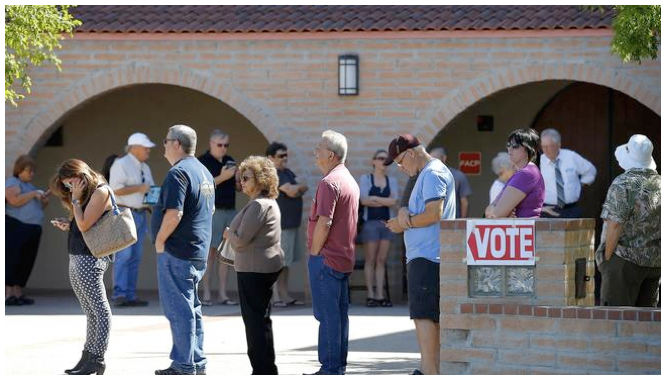CommentsANALYSIS--California voters once again proved they cherish their role in direct democracy, running through the entire statewide list of 17 measures with no apparent drop off in voting. With 100% of the precincts ‘partially’ reporting according to the Secretary of State’s site, 8.6 million votes were cast for Proposition 51, the school bond, at the head of the ballot; and 8.6 million votes were cast for the plastic bag referendum, Proposition 67, at the tail end of the ballot.
The fear that voters would give up as they worked down the long list of state propositions did not come to pass. There were variations in the proposition vote totals as usual with a low count for the fairly meaningless advisory measure to overturn the Citizen’s United decision (Proposition 59) tallying 8.2 million votes to a top total of 8.84 million votes cast for the marijuana legalization measure, Proposition 64. Also attracting attention from voters were the tobacco tax, Proposition 56 totaling 8.82 million votes and the anti-gun Proposition 63 that received 8.7 million votes.
In fact, with Proposition 63 and 64 near the end of the ballot piling up votes, some voters apparently looked for those measures adding to the totals compiled by the many voters who ran the entire 17 measure gauntlet.
Money didn’t guarantee a win with the ballot initiatives either, although it was better to have the most money on your side. Twelve of the 17 measures that had the largest war chest were victorious. Opponents of the tobacco tax outspent supporters but lost. The Proposition 60 condoms measure had the most money on the yes side but lost. The plastic bag industry outspent opponents on two measures, Proposition 65 and the Proposition 67 referendum but lost both.
The death penalty procedural reform issue, Proposition 66 is still close with votes to count but it is currently passing. Money was about even on both sides of that measure, although a large chunk of the yes money went to qualifying the initiative.
While the initiative battles have been decided, there may be little rest for those who follow direct democracy in California. Qualifying an initiative still depends on collecting signatures determined by the low gubernatorial voter turnout of 2014. Interests and individuals who want to ask voters to support their issues will take advantage of the low signature requirement to push their proposals for the 2018 ballot.
Proponents are also aware that waiting to qualify a measure closer to the next ballot could mean competition for signatures with other ballot measure advocates. To avoid paying increased signature costs when there are many measures in circulation, don’t be surprised to see some potential initiatives circulating early next year.
(Joel Fox is Editor of Fox & Hounds … where this piece originated … and President of the Small Business Action Committee.)
-cw
Explore
Our mission is to promote and facilitate civic engagement and neighborhood empowerment, and to hold area government and its politicians accountable.

 CityWatch Los Angeles
Politics. Perspective. Participation.
CityWatch Los Angeles
Politics. Perspective. Participation.
29
Tue, Apr















